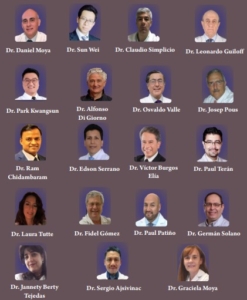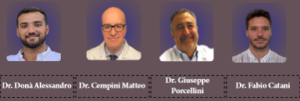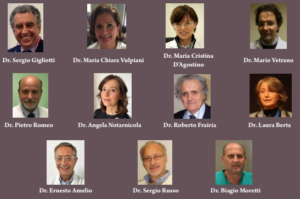Extracorporeal Shockwave in Combination with Arthroscopic Surgery for Calcified Supraspinatus Tendinitis
Original Article | Vol 3 | Issue 2 | July-December 2023 | page: 52-56 | Jin Li, Jie Li, Xi Jin, Sheng Liu, Shaohong Zhao, Liheng Zhang
DOI: https://doi.org/10.13107/jrs.2023.v03.i02.105
Author: Jin Li [1, 2], Jie Li [1], Xi Jin [2], Sheng Liu [2], Shaohong Zhao [2], Liheng Zhang [1]
[1] Department of Sports Medicine and Joint Surgery, Jilin Province People’s Hospital, , Changchun, China,
[2] Graduate Union of Changchun University of Chinese Medicine, Changchun, China.
Address of Correspondence
Dr. Liheng Zhang,
Department of Sports Medicine and Joint Surgery, Jilin Province People’s Hospital, Changchun, China.
E-mail: 1987174487@qq.com
Abstract
Objective: Exploring the therapeutic effect of extracorporeal shockwave combined with Arthroscopic Surgery on calcified supraspinatus tendinitis.
Materials and Methods: Sixty patients with calcific supraspinatus tendinitis who received treatment in our hospital from June 2022 to June 2023 were randomly divided into two groups. All patients had disease lasting more than 6 months. The control group received extracorporeal shockwave therapy (ESWT), while the observation group, after undergoing arthroscopic debridement of calcific deposits in the joint, began receiving the same ESWT as the control group after 2 weeks. The differences in Visual Analog Scale (VAS) score, University of California at Los Angeles (UCLA) score, and Constant–Murley score between the two groups before and after treatment were recorded and compared.
Results: Before treatment, there was no significant difference in VAS score, UCLA score, and Constant–Murley Scale (CMS) score between the two groups of patients (P > 0.05); compared with before treatment, both groups of patients showed a significant decrease in VAS scores after 1 and 2 months of treatment (P < 0.05). After 1 and 2 months of treatment, the VAS scores of the observation group were significantly lower than the ones of the control group (P < 0.05). Compared with before treatment, the UCLA score and CMS score of both groups of patients significantly increased after 1 and 2 months of treatment (P < 0.05). After 1 and 2 months of treatment, the UCLA score and CMS score of the observation group were significantly higher than those of the control group (P < 0.05).
Conclusion: The combination of extracorporeal shockwave and arthroscopy has a significant therapeutic effect on calcified supraspinatus tendinitis, helping to improve shoulder joint function and effectively alleviate pain in patients.
Keywords: Extracorporeal shockwave, Arthroscopy, Calcifying supraspinatus tendinitis, Shoulder joint function, Pain.
References:
1. Nakhaie Amroodi M, Abdolahi Kordkandi S, Moghtadaei M, Farahini H, Amiri S, Hajializade M. A study of characteristic features and diagnostic roles of X-ray and MRI in calcifying tendinitis of the shoulder. Med J Islam Repub Iran 2022,36:79.
2. Kim MS, Kim IW, Lee S, Shin SJ. Diagnosis and treatment of calcific tendinitis of the shoulder. Clin Shoulder Elb 2020;23:203-9.
3. Louwerens JK, Claessen FM, Sierevelt IN, Eygendaal D, van Noort A, van den Bekerom MP. Radiographic assessment of calcifying tendinitis of the rotator cuff: An inter-and intraobserver stud. Acta Orthop Belg 2021;86:525-531.
4. Bechay J, Lawrence C, Namdari S. Calcific tendinopathy of the rotator cuff: A review of operative versus nonoperative management. Phys Sportsmed 2020;48:241-6.
5. de Witte PB, van Adrichem RA, Selten JW, Nagels J, Reijnierse M, Nelissen RG. Radiological and clinical predictors of long-term outcome in rotator cuff calcific tendinitis. Eur Radiol 2016;26:3401-11.
6. González-Martín D, Garrido-Miguel M, de Cabo G, Lomo-Garrote JM, Leyes M, Hernández-Castillejo LE. Rotator cuff debridement compared with rotator cuff repair in arthroscopic treatment of calcifying tendinitis of the shoulder: A systematic review and meta-analysis. Rev Esp Cir Ortop Traumatol 2023,12:187.
7. Verstraelen F, Bemelmans Y, Lambers Heerspink O, van der Steen M, Jong B, Jansen E, et al. Comparing midterm clinical outcome of surgical versus ultrasound guided needle aspiration of the calcific deposits for therapy resistant calcifying tendinitis of the shoulder. A comparative cohort study. J Orthop Sci 2023,18:91.
8. Michal M, Agaimy A, Folpe AL, Zambo I, Kebrle R, Horch RE, et al. Tenosynovitis with psammomatous calcifications: A distinctive trauma-associated subtype of idiopathic calcifying tenosynovitis with a predilection for the distal extremities of middle-aged women-a report of 23 cases. Am J Surg Pathol 2019;43:261-7.
9. Darrieutort-Laffite C, Najm A, Garraud T, Adrait A, Couté Y, Louarn G, et al. P039 Rotator cuff calcific tendinopathy: Chondrocyte-like cells surrounding calcific deposits express tnap and enpp1, two key enzymes of the mineralization process. Ann Rheum Dis 2018;16:162-8.
10. Uhthoff HK, Loehr JW. Calcific tendinopathy of the rotator cuff: Pathogenesis, diagnosis, and management. J Am Acad Orthop Surg 1997;5:183-91.
11. Hughes PJ, Bolton Maggs B. Calcific tendinitis. Curr Orthop 2002;16:389-94.
12. Kamonseki DH, da Rocha GM, Mascarenhas V, de Melo Ocarino J, Silveira Pogetti L. Extracorporeal shock-wave therapy for the treatment of non-calcific rotator cuff tendinopathy: A systematic review and meta-analysis. Am J Phys Med Rehabil 2023;32:1.
13. Moole H, Jaeger A, Bechtold ML, Forcione D, Taneja D, Puli SR. Success of extracorporeal shock wave lithotripsy in chronic calcific pancreatitis management: A meta-analysis and systematic review. Pancreas 2016;45:651-8.
14. Ji H, Liu H, Han W, Xia Y, Liu F. Bibliometric analysis of extracorporeal shock wave therapy for tendinopathy. Medicine (Baltimore) 2023,102:e36416.
15. Frizzero A, Vittadini F, Barazzuol M, Gasparre G, Finotti P, Meneghini A, et al. Extracorporeal shockwaves therapy versus hyaluronic acid injection for the treatment of painful non-calcific rotator cuff tendinopathies: Preliminary result. J Sports Med Phys Fitness 2017;57:1162-8.
16. Bannuru RR, Flavin NE, Vaysbrot E, Harvey W, McAlindon T. High-energy extracorporeal shock-wave therapy for treating chronic calcific tendinitis of the shoulder: A systematic review. Ann Intern Med 2014;160:542-9.
17. Lee SY, Cheng B, Grimmer-Somers K. The midterm effectiveness of extracorporeal shockwave therapy in the management of chronic calcific shoulder tendinitis. J Shoulder Elbow Surg 2011;20:845-54.
18. Balke M, Bielefeld R, Schmidt C, Dedy N, Liem D. Calcifying tendinitis of the shoulder: Midterm results after arthroscopic treatment. Am J Sports Med 2012;40:657-61.
19. Pieber K, Grim-Stieger M, Kainberger F, Funovics M, Resch KL, Bochdansky T, et al. Long-term course of shoulders after ultrasound therapy for calcific tendinitis: Results of the 10-Year follow-up of a randomized controlled trial. Am J Phys Med Rehabil 2018;97:651-8.
| How to Cite this article: Li J, Li J, Jin X, Liu S, Zhao S, Zhang L | Extracorporeal Shockwave in Combination with Arthroscopy for Calcified Supraspinatus Tendonitis | Journal of Regenerative Science | Jul-Dec 2023; 3(2): 52-56. |









